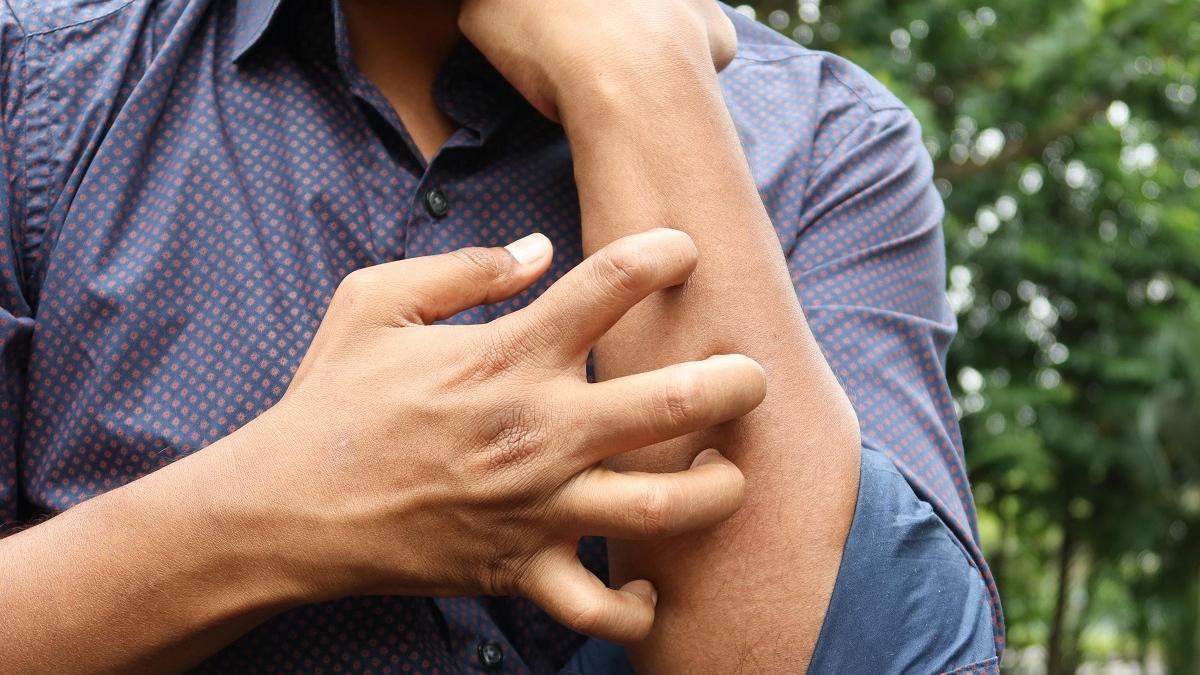Mycosis fungoides is a type of lymphoma T-cell cutaneous disease, a rare oncological disease that affects the skin and whose symptoms can be confused with other mild skin pathologies.
This cancer accounts for approximately 65% of all cases of cutaneous T-cell lymphomas.
- In our country between 2 and 3 people per 100,000 inhabitants suffer from it.
- One of its peculiarities is that it affects men more in adulthood, specifically, it is estimated that 2 men suffer from it for every woman and the average age of diagnosis is 58.6 years.
It is precisely the low incidence of mycosis fungoides which makes its treatment a great challenge, since it limits the availability of information and experience and which leads to its inclusion within rare oncological diseases.
This type of cutaneous T-cell lymphoma It mainly affects the skin in its initial stages, which makes it known as a skin cancer, but as he assures Dr. Pablo Ortiz Professor of Dermatology of the UCM and head of the Dermatology Service at the 12 de Octubre University Hospital, the problems are multiple:
- “From the difficulty of managing a disease that affects visible skin
- Going through symptoms such as itching that can be devastating
- “Even the possibility that the disease progresses, compromising the patient’s life.”
Very nonspecific skin symptoms
The symptoms of mycosis fungoides They depend on the stage of the disease. And as he explains Dr. Cristina MuniesaDermatologist of the Dermatology Service of the Bellvitge University Hospital (Barcelona) and coordinator of the Spanish Cutaneous Lymphomas Group of the Spanish Academy of Dermatology and Veneorology, all of them can be confused with other dermatological conditions such as “eczemas, ringworms, psoriasis, etc.”,
- In its early stages, skin rashes, itching and peeling appear.
As the disease progresses, these symptoms worsen and begin to appear
- Thickenings in the skin
- Redness
- Mushroom-shaped ulcers and tumors that give this pathology its name.
For all these reasons, Dr. Muniesa points out that “the differential diagnosis is usually broad and the dermatologist must think about mycosis fungoides. For this reason, One of the main problems that patients face is diagnostic delay. of the disease with the uncertainty and anguish that this entails”.
And it is that not treating mycosis fungoides in time increases the risk of lymphoma progressing to more advanced stages and can spread to other parts of the body, affecting “lymph nodes, blood or viscera and can end the patient’s life” says Dr. Ortiz.
The invisible symptoms of mycosis fungoides
To these visible symptoms we must add others that cannot be seen with the naked eye, such as:
- The Depression
- Sleep disorders (due to itching)
- Fatigue, which is also experienced in a chronic, progressive and debilitating manner, which affects your daily quality of life.
And it is that Patients with mycosis fungoides, in addition to suffering from a rare cancer, suffer traumatic moments since, as Dr. Muniesa says, “they are skin tumors, and therefore visible, which carries a stigma for the patient and therefore they are often also accompanied by a decrease in their social life.”
Early diagnosis to prevent the progression of mycosis fungoides
All this makes early diagnosis be crucial, since in advanced stages this tumor can spread to other parts of the body, compromising the patient’s life. Nonetheless, The diagnosis takes an average of 36 months from the first consultation, which makes early treatment difficult to delay the evolution of mycosis fungoides.
- “Around 20-25% of cases can progress to advanced stages with tumor lesions, with a tendency to ulceration with the consequent risk of superinfection and pain.” says Dr. Muniesa.
How is this cutaneous lymphoma treated?
Well, one of the most effective ways to deal with it is chemotherapy.
Clinical advances and research have largely managed to slow the progression of the disease, as confirmed by Dr. Muniesa, “Fortunately, we recently have a therapeutic alternative for patients with mycosis fungoides, which represents new hope to continue controlling their disease.”.
“Now patients are offered an improvement in their quality of life, as they can be treated at home, avoiding annoying trips to health centers.
On the other hand, this type of treatment also frees up resources from the public health system, which can therefore be dedicated to other patients and pathologies,” states the doctor Juan Vilageneral director of Recordati Rare Diseases, specialized in rare diseases.
It is essential to highlight the importance of continuous research and collaboration between health professionals, patients, families and the pharmaceutical industry to improve the quality of life of those who suffer from mycosis fungoides and advance the development of new therapies.

